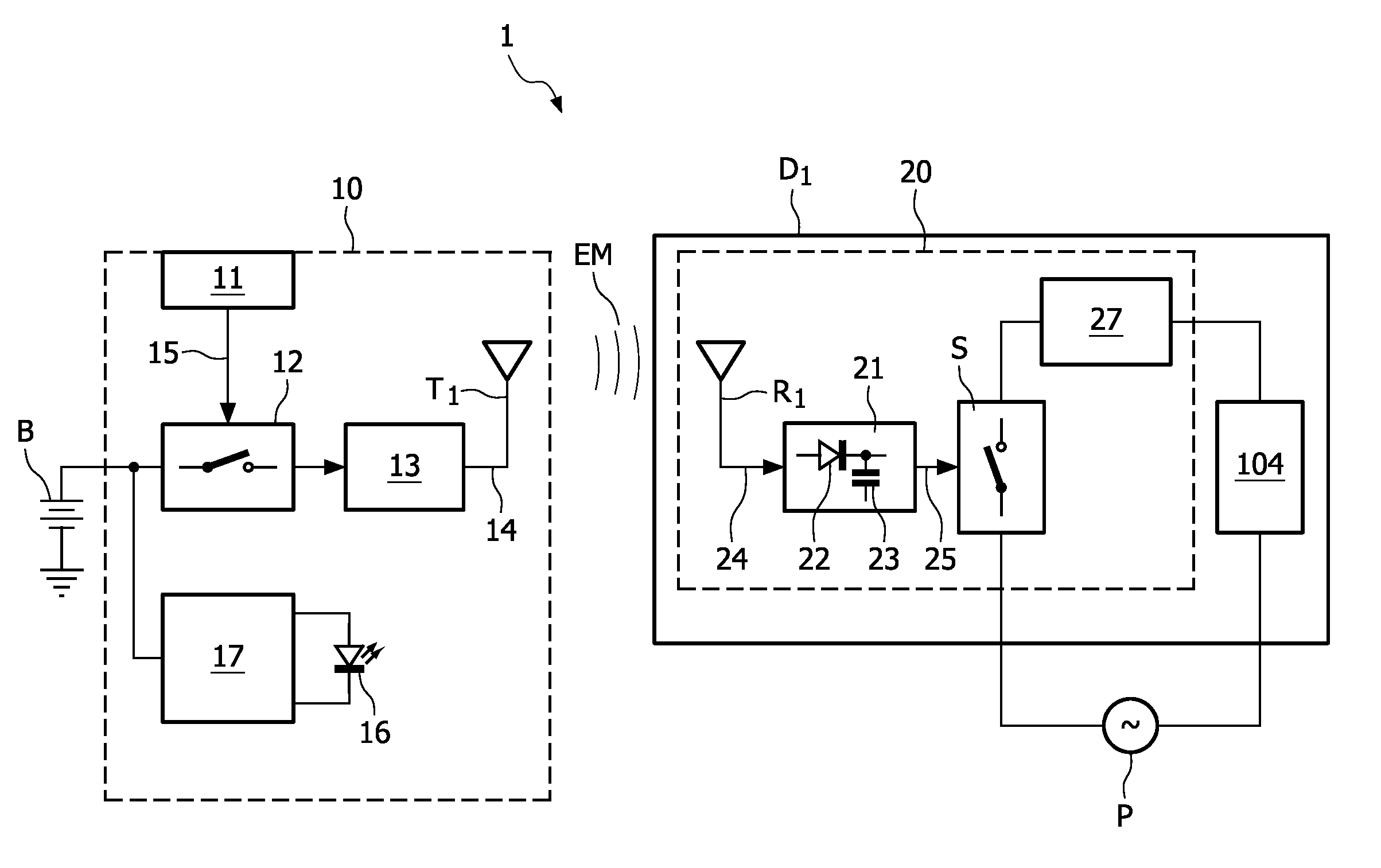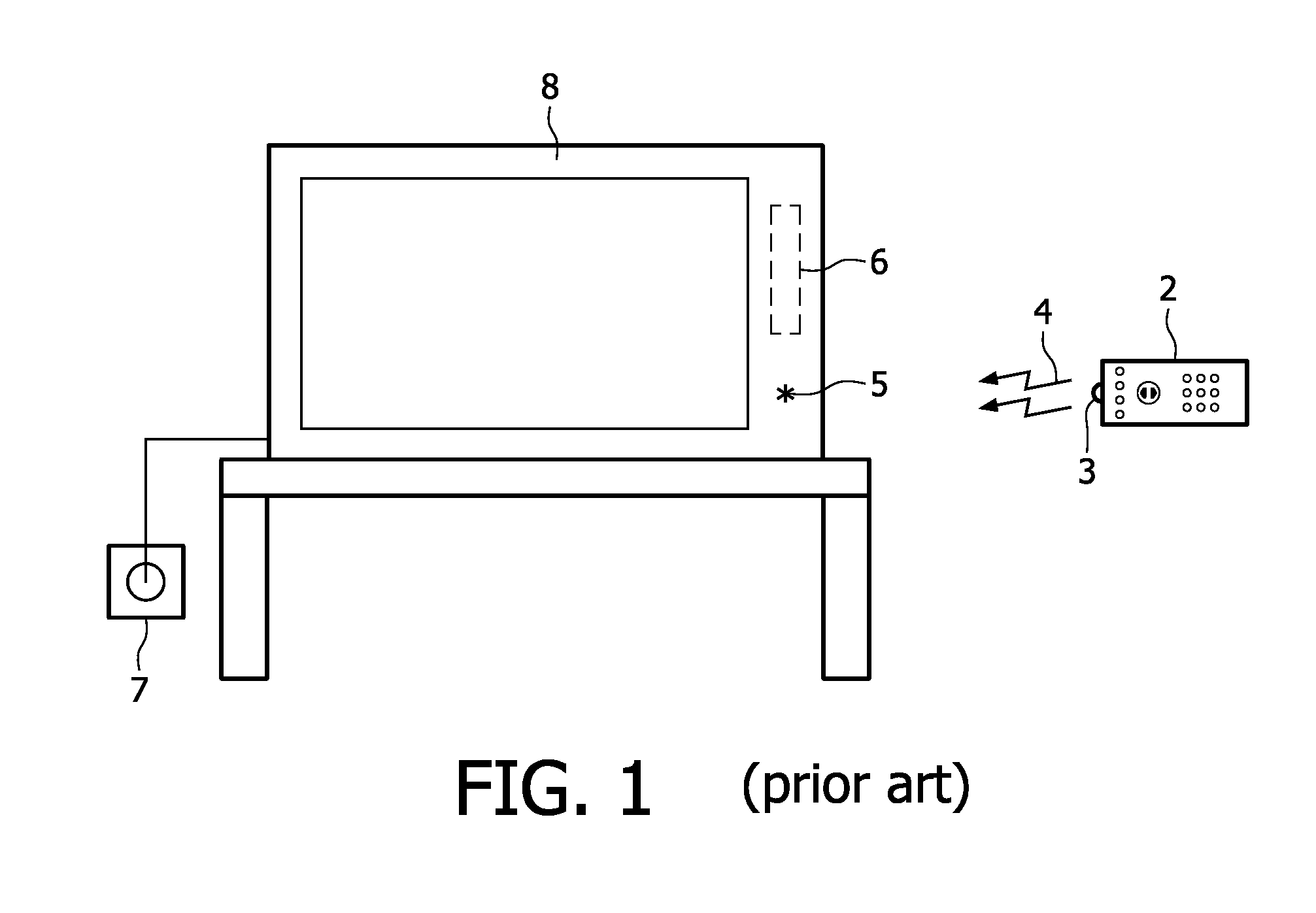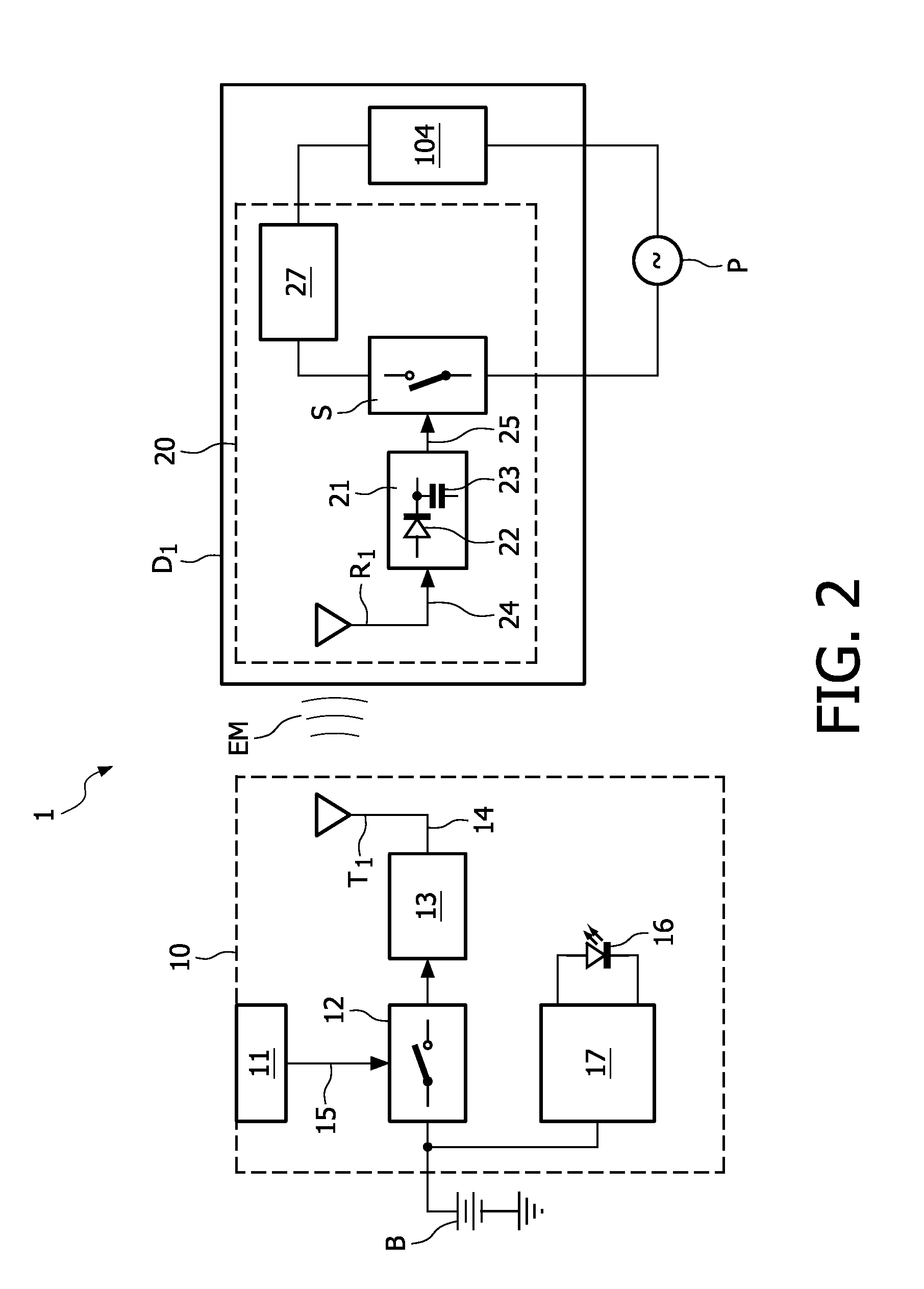[0008]In the method according to the invention, the
electromagnetic radiation is automatically detected in an entirely passive manner by the detecting antenna, which is caused to resonate by the energy in the electromagnetic
radiation, giving the second electrical signal. Also, the conversion of this AC electrical signal into a DC switch actuating signal is performed in an entirely passive manner, i.e. by using electrical components that do not require a power supply. An obvious
advantage of the method according to the invention is that, when a device is turned off in the manner described, it is indeed off, and not merely in standby. The device is entirely quiescent when turned off using this method, since it does not draw any current and does not consume any power. An obvious
advantage of the method according to the invention is the saving in energy that can be obtained. Another further
advantage is that the device can still be reactivated by the remote control, so that convenience and ease of use are not compromised in any way.
[0016]The first electrical signal can be continuously generated, i.e. as a
continuous signal without interruption. In a preferred embodiment of the invention, the first electrical signal comprises a pulsed high-frequency signal, i.e. the
signal generator outputs a series of high-frequency pulses, perhaps with the aid of a suitable
capacitor, as will be know to a person skilled in the art. One advantage of this technique is that the lifespan of a battery powering the
signal generator is prolonged. More importantly, pulsing allows the energy, i.e. the amplitude, of the first electrical signal to effectively be increased, so that the reliability of the switching process is improved. At the same time, it can be ensured that an overall average energy value of the signal is not exceeded, so that the signal satisfies
safety standards. Also, this technique allows the signal range to be increased. Again, the signal generated in this way can be of a predefined duration, or may be generated as long as the user carries out the appropriate action with the remote control device.
[0018]A high-frequency signal in an
ISM band can be used to carry information which can be decoded at the receiving end. Therefore, in a further preferred embodiment of the invention, the first electrical signal comprises a
carrier signal modulated to carry device identification information, such as a device identification code, for the device to be controlled. This can be advantageous when several devices are controlled by remote control units using the method according to the invention, or, more particularly, when a single remote
control unit is used to control more than one device. In such a case, the remote control unit can be equipped with different buttons for addressing the different devices, and for each device activated or deactivated with this remote control, the actuating switch is opened or closed on the basis of the device identification information. This will be explained in more detail in conjunction with the description of the figures. The actuating switch in the remote control interface module of a device can be a simple
toggle switch, so that the actuating signal causes the switch to be closed if it was already opened, and opened if it was already closed.
[0020]In a preferred embodiment of the invention, the remote control interface module is incorporated in the device to be controlled. Advantageously, the remote control interface module described above can act as a preliminary stage for a state of the art remote control interface, since the user can control the device in the usual remote
control manner once the device is activated from its
quiescent state using one of the methods described above. Since the components required for the remote control interface module are small and inexpensive, a device such as a television or
receiver can easily be adapted to include a remote control interface module according to the invention.
Adaptation can take place during the manufacturing process, but it also conceivable that an already existing device could be modified to include the type of remote control interface module disclosed here. Equally, a remote control interface module for an existing device could be placed between the device and its power supply, for example between the mains plug of the device and an electrical socket.
[0021]A pair of antennae, one each in remote control unit and remote control interface module, is generally sufficient for a simple function such as toggling between an ‘on’ state and an ‘off’ state as already described above. However, the method according to the invention could also be used for more advanced functions such as increasing or decreasing the brightness of a
light source that avails of a remote control interface unit. This can be achieved by generating the signal at distinct frequencies in the remote control unit, for example at a first frequency for an ‘on’ function, or at a second, different, frequency for an ‘off’ function. At the receive side, corresponding filters, responsive to the first or second frequency, can determine the intended function.
 Login to View More
Login to View More  Login to View More
Login to View More 


